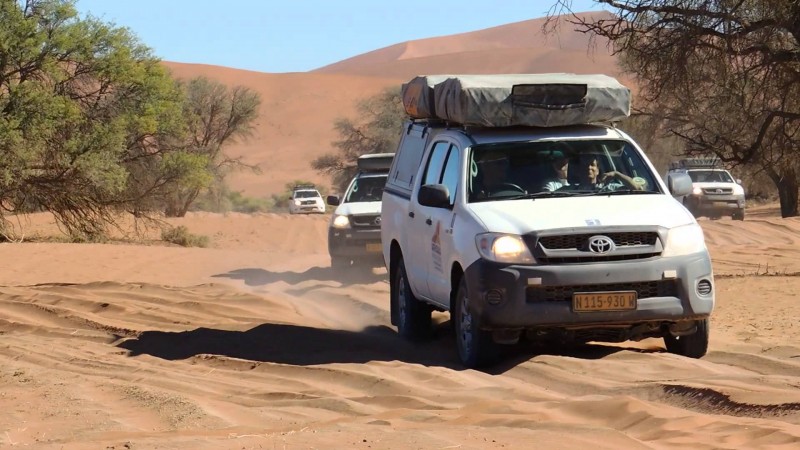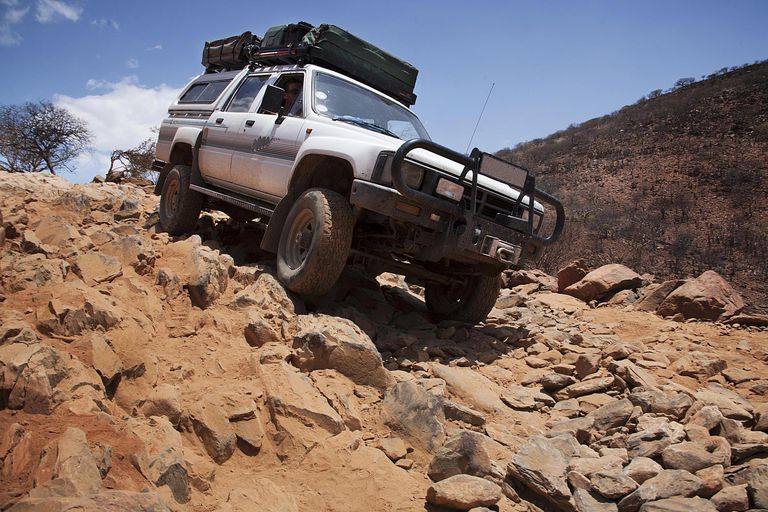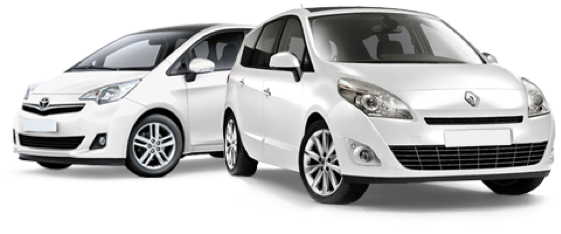It’s crucial to have the right tyre pressure when driving off road in Namibia. As a general rule, you’ll need hard tyres for paved roads, slightly softer tyres for graded gravel, softer still for slow going over uneven rocks, and soft as possible for sand. In four-wheel-drive, and with tyres deflated to around 1 bar, you’ll have little trouble driving on sand or mud. Anything below 1 bar and there’s a risk that the tyre will come off the rim, especially if you over accelerate or turn the wheel too sharply. Stay in a low gear and keep a constant speed. Drive in the tracks left by previous vehicles if there are any.  Driving on sand with hard tyres is a sure way to get stuck. If you do feel yourself getting stuck in sand and there’s no momentum to power through, stop immediately, let air out the tyres if applicable, and reverse slowly back down your tyre tracks. This can help compact the sand beneath the wheels and when you next move forward you should have more traction. It’s a good idea to carry a spade and recovery/sand tracks just in case. Placing branches under the wheels can also help in an emergency, but be careful of splinters. If you’re driving off road in Namibia, you have to have a compressor. Soft tyres are essential for sand, but can be disastrous on rocks. Without decent tyre pressure, hitting rocks can cause punctures and can damage the wheel rim. You’ll need to reinflate your tyres before heading back to rocky ground, and you may need to do this multiple times in a single day. As to what constitutes a hard tyre, that’ll be down to the type of vehicle, tyre specifications and how much weight you’re carrying. Around 2 bar is usually hard enough for slow going over rocks, and 2.5 to 3 bar is about right for hard packed gravel and tar. Ideally, tyre pressure should be measured when tyres are cold. Hot tyres will read as much as half a bar higher.
Driving on sand with hard tyres is a sure way to get stuck. If you do feel yourself getting stuck in sand and there’s no momentum to power through, stop immediately, let air out the tyres if applicable, and reverse slowly back down your tyre tracks. This can help compact the sand beneath the wheels and when you next move forward you should have more traction. It’s a good idea to carry a spade and recovery/sand tracks just in case. Placing branches under the wheels can also help in an emergency, but be careful of splinters. If you’re driving off road in Namibia, you have to have a compressor. Soft tyres are essential for sand, but can be disastrous on rocks. Without decent tyre pressure, hitting rocks can cause punctures and can damage the wheel rim. You’ll need to reinflate your tyres before heading back to rocky ground, and you may need to do this multiple times in a single day. As to what constitutes a hard tyre, that’ll be down to the type of vehicle, tyre specifications and how much weight you’re carrying. Around 2 bar is usually hard enough for slow going over rocks, and 2.5 to 3 bar is about right for hard packed gravel and tar. Ideally, tyre pressure should be measured when tyres are cold. Hot tyres will read as much as half a bar higher.















